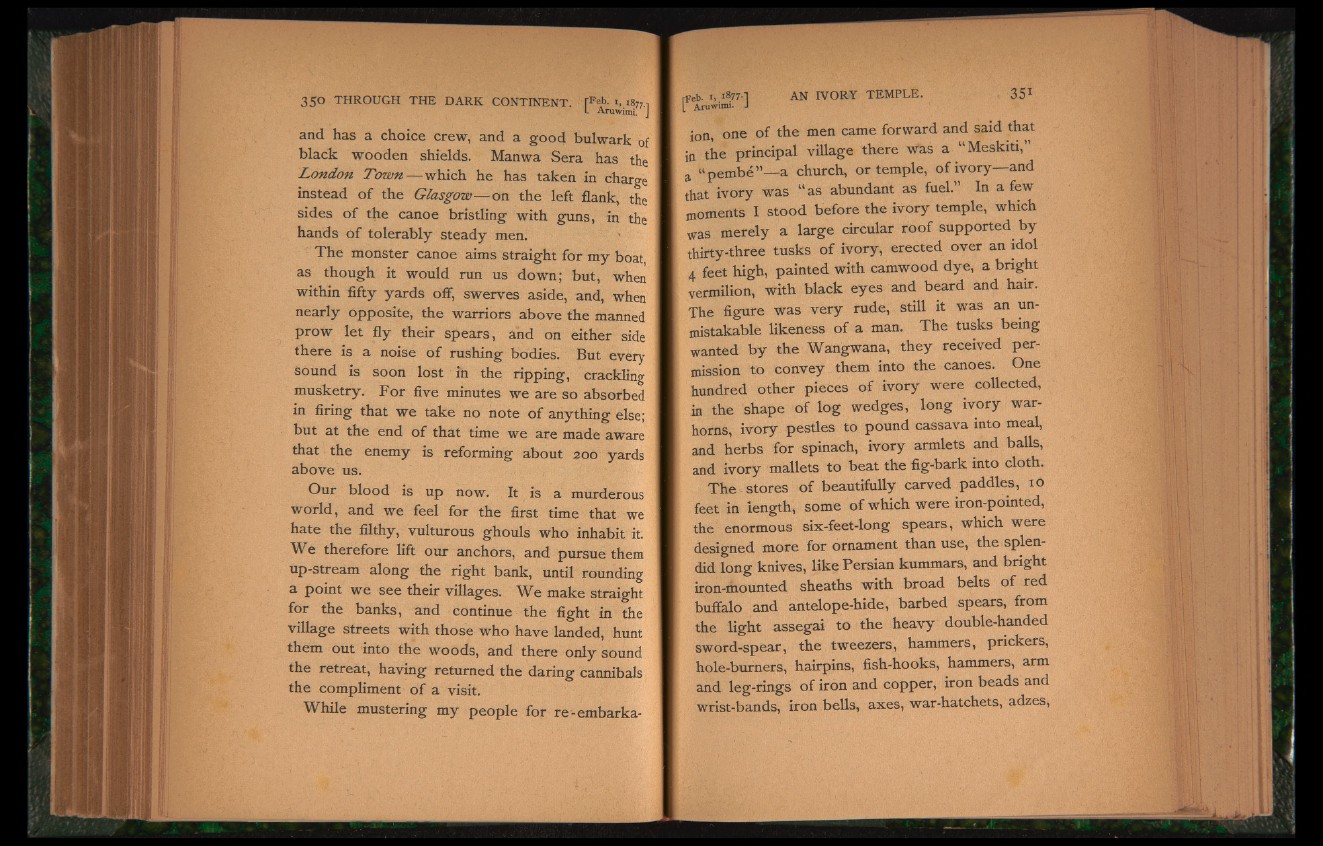
and has a choice crew, and a good bulwark of
black wooden shields. Manwa Sera has the
London Town — which he has taken in charge
instead of the Glasgow— on the left flank, the
sides of the canoe bristling with guns, in the
hands of tolerably steady men.
The monster canoe aims straight for my boat,
as though it would run us down; but, when
within fifty yards off, swerves aside, and, when
nearly opposite, the warriors above the manned
prow let fly their spears, and on either side
there is a noise of rushing bodies. But every
sound is soon lost in the ripping, crackling
musketry. For five minutes we are so absorbed
in firing that we take no note of anything else;
but at the end of that time we are made aware
that the enemy is reforming about 200 yards
above us.
Our blood is up now. It is a murderous
world, and we feel for the first time that we
hate the filthy, vulturous ghouls who inhabit it.
We therefore lift our anchors, and pursue them
up-stream along the right bank, until rounding
a point we see their villages. We make straight
for the banks, and continue the fight in the
village streets with those who have landed, hunt
them out into the woods, and there only sound
the retreat, having returned the daring cannibals
the compliment of a visit.
While mustering my people for re-embarkarFeb.
1 1877.1 A N IV O R Y T EM P L E . 3 5 1 [ Aruwimi. J
ion, one of the men came forward and said that
in the principal village there was a “Meskiti,
a “pembe”— a church, or temple, of ivory— and
that ivory was uas abundant as fuel. In a few
moments I stood before the ivory temple, which
was merely a large circular roof supported by
thirty-three tusks of ivory, erected over an idol
4 feet high, painted with camwood dye, a bright
vermilion, with black eyes and beard and hair.
The figure was very rude, still it was an unmistakable
likeness of a man. The tusks being
wanted by the Wangwana, they received permission
to convey them into the canoes. One
hundred other pieces of ivory were collected,
in the shape of log wedges, long ivory war-
horns, ivory pestles to pound cassava into meal,
and herbs for spinach, ivory armlets and balls,
and ivory mallets to beat the fig-bark into cloth.
The stores of beautifully carved paddles, 10
feet in length, some of which were iron-pointed,
the enormous six-feet-long spears, which were
designed more for ornament than use, the splendid
long knives, like Persian kummars, and bright
iron-mounted sheaths with broad belts of red
buffalo and aiitelope-hide, barbed spears, from
the light assegai to the heavy double-handed
sword-spear, the tweezers, hammers, prickers,
hole-burners, hairpins, fish-hooks, hammers, arm
and leg-rings of iron and copper, iron beads and
wrist-bands, iron bells, axes, war-hatchets, adzes,